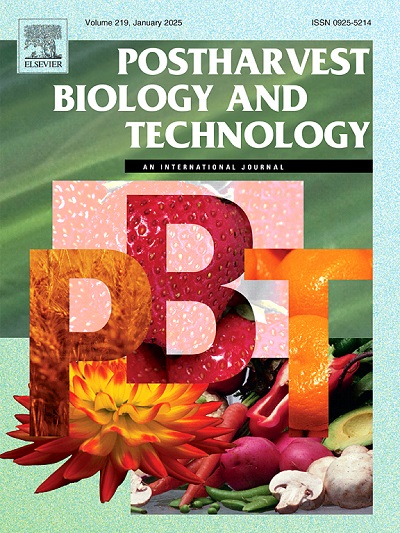The role of IpSAG12 in regulating florescence and senescence of cut Itoh peony flowers
IF 6.4
1区 农林科学
Q1 AGRONOMY
引用次数: 0
Abstract
Senescence-associated genes (SAGs) play a crucial role in regulating organ senescence in plant growth and development. However, their specific role in the florescence and senescence processes of cut peony flowers, particularly Itoh peonies, remains largely unclear. This study employed transcriptome analysis to investigate the expression patterns of IpSAG genes during the florescence and senescence of cut Itoh peony flowers in vases. Additionally, the function of IpSAG12 was examined using virus-induced gene silencing (VIGS) via vacuum infiltration to elucidate its role. The findings revealed that the opening and senescence of cut Itoh peonies in vases progress through three stages: early opening, middle transition, and later senescence. Notably, ethylene release followed a specific pattern, increasing sharply at the onset of flowering, then declining quickly during the early opening stage, displaying an ethylene-climacteric trait. Furthermore, the expression of the senescence-associated gene IpSAG12 was minimal during the opening and transition stages but significantly increased by 27.5 times during the senescence stage. Silencing IpSAG12 using VIGS extended the vase life of cut flowers by approximately 12 hours. This intervention resulted in a reduced electrolyte leakage rate, lower malondialdehyde (MDA) content, decreased ethylene release rate, reduced activity of 1-aminocyclopropane-1-carboxylic acid oxidase 1 (ACO1), and lower expression of IpACS1 and IpACO1 compared to the TRV control group. Conversely, the soluble protein content significantly increased in petals of the TRV-IpSAG12 group. Collectively, these findings suggest that IpSAG12 is a critical target gene in the ethylene signaling pathway that governs petal senescence in Itoh peonies.
求助全文
约1分钟内获得全文
求助全文
来源期刊

Postharvest Biology and Technology
农林科学-农艺学
CiteScore
12.00
自引率
11.40%
发文量
309
审稿时长
38 days
期刊介绍:
The journal is devoted exclusively to the publication of original papers, review articles and frontiers articles on biological and technological postharvest research. This includes the areas of postharvest storage, treatments and underpinning mechanisms, quality evaluation, packaging, handling and distribution of fresh horticultural crops including fruit, vegetables, flowers and nuts, but excluding grains, seeds and forages.
Papers reporting novel insights from fundamental and interdisciplinary research will be particularly encouraged. These disciplines include systems biology, bioinformatics, entomology, plant physiology, plant pathology, (bio)chemistry, engineering, modelling, and technologies for nondestructive testing.
Manuscripts on fresh food crops that will be further processed after postharvest storage, or on food processes beyond refrigeration, packaging and minimal processing will not be considered.
 求助内容:
求助内容: 应助结果提醒方式:
应助结果提醒方式:


